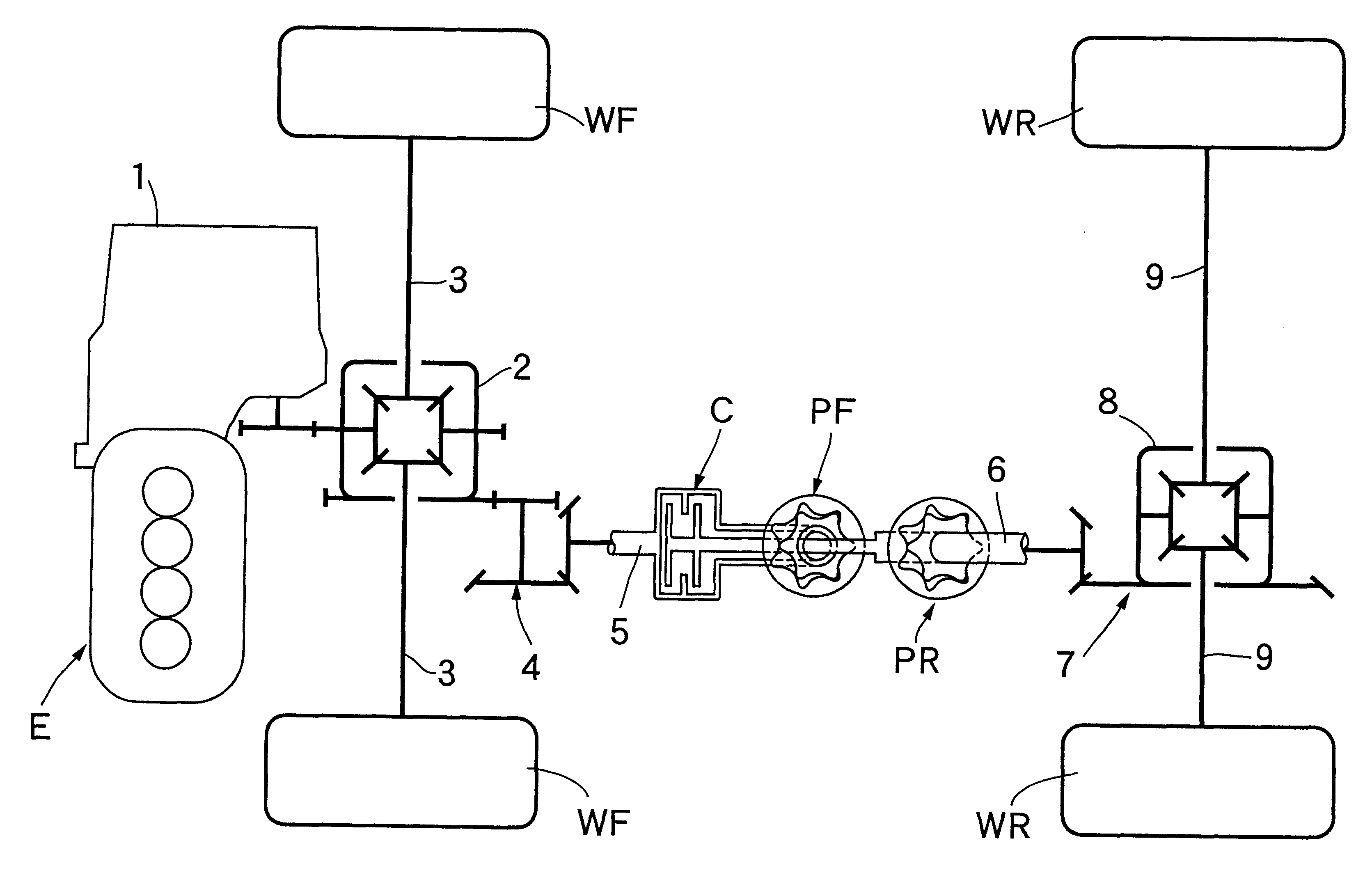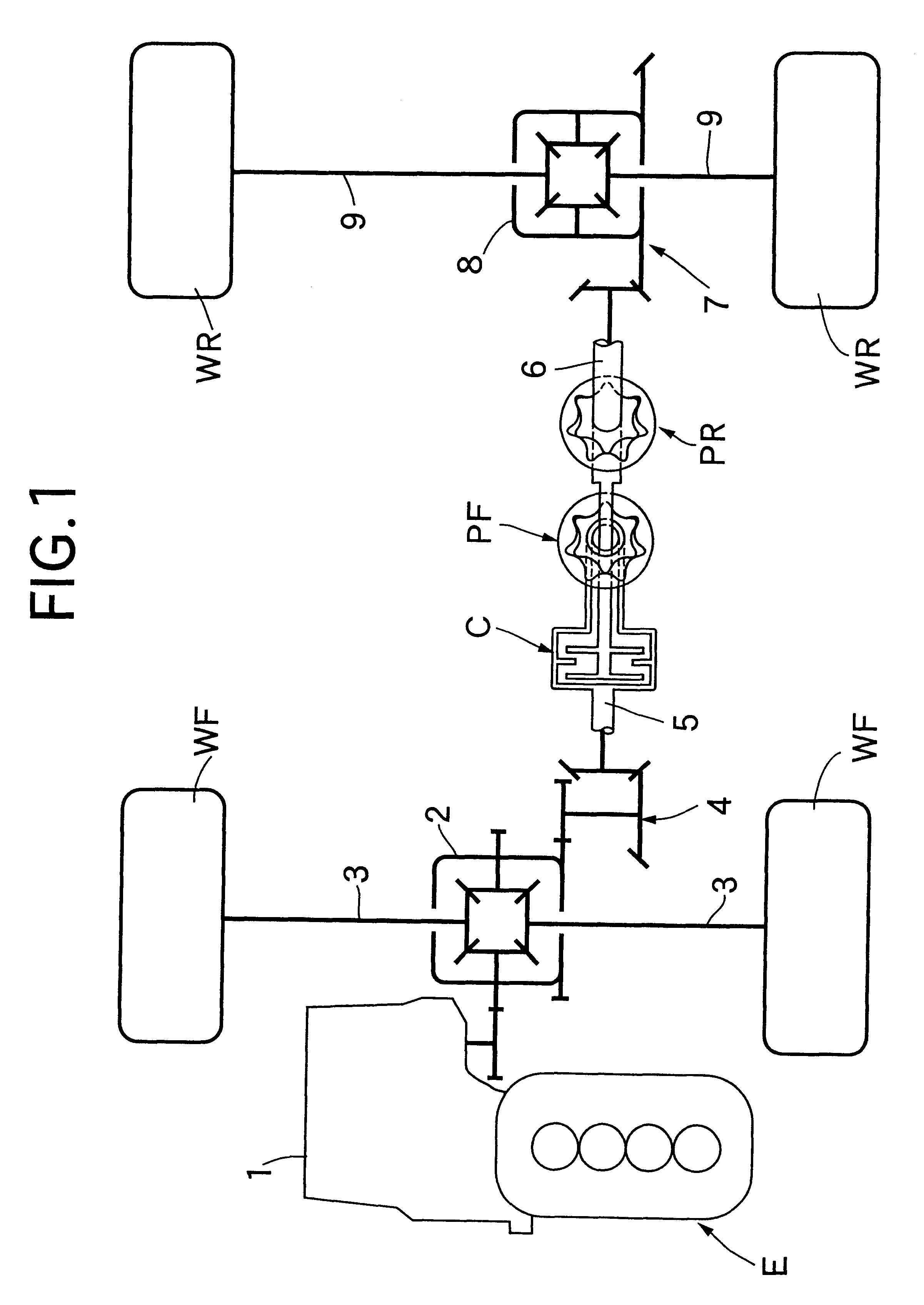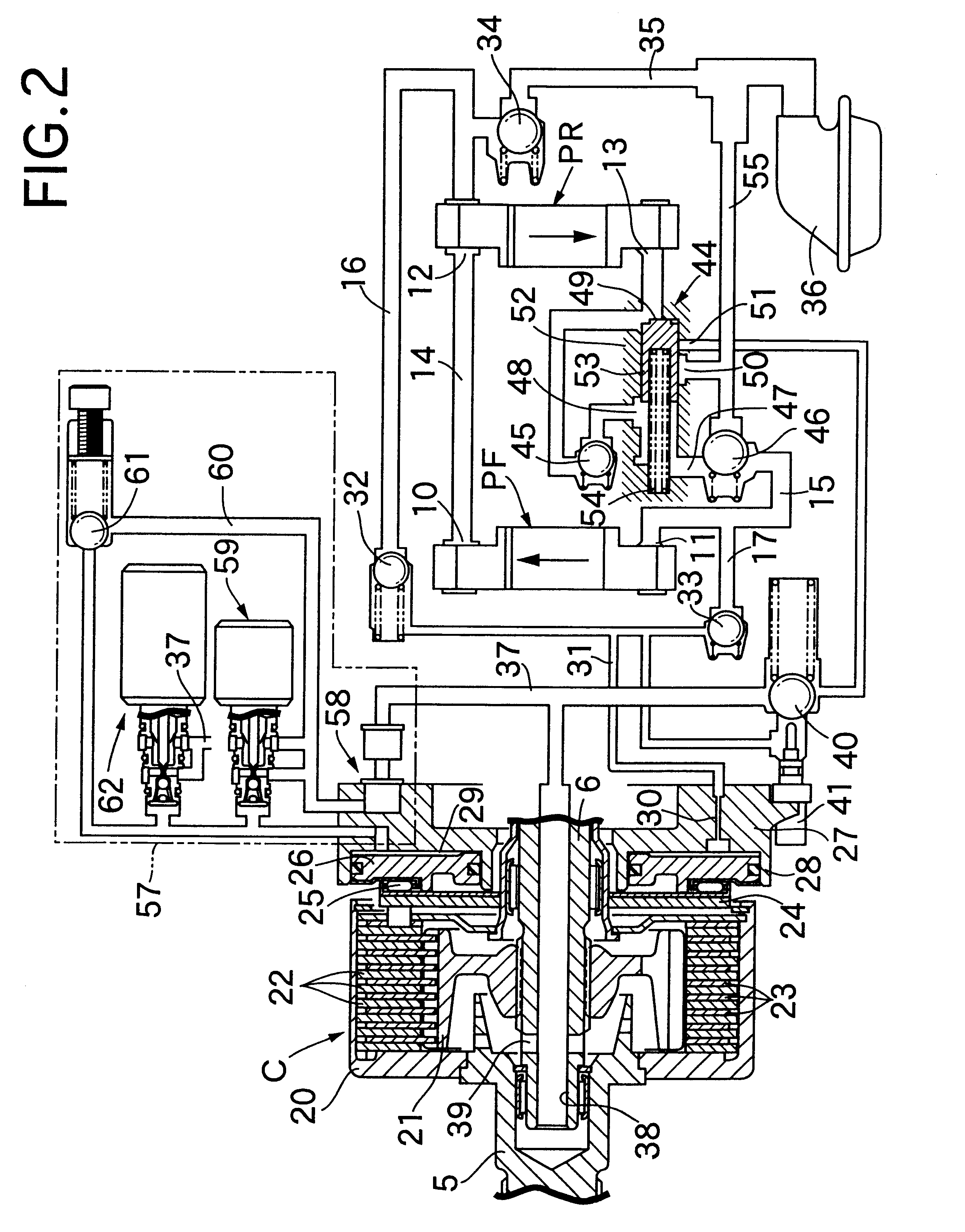Driving force control device for four-wheel drive vehicle
a four-wheel drive, torque control technology, applied in mechanical equipment, transportation and packaging, tractors, etc., can solve the problems of inability to obtain an objective, small torque transmission to the rear wheels, and increasing the weight of the vehicl
- Summary
- Abstract
- Description
- Claims
- Application Information
AI Technical Summary
Benefits of technology
Problems solved by technology
Method used
Image
Examples
Embodiment Construction
In FIG. 1 the output from an engine E as the prime mover mounted in the front part of a vehicle, is applied into a front differential 2 via a transmission 1. The output from the front differential 2 is transmitted to right and left front wheels WF, WF, which are driven wheels, via drive shafts 3, 3. Furthermore, the output from the engine E which has been applied to the front differential 2 is transmitted to an input shaft 5 of a hydraulic clutch C via a bevel gear 4 and the power output from an output shaft 6 of the hydraulic clutch C, is transmitted to right and left rear wheels WR, WR which are driven wheels via a bevel gear 7, a rear differential 8 and drive shafts 9, 9.
That is, while the right and left front wheels WF, WF, which are one pair of front or rear driven wheels, are driven directly by the engine E, the right and left rear wheels WR, WR which are the other pair of front or rear driven wheels, are driven via the hydraulic clutch C.
The engagement force of the hydraulic ...
PUM
 Login to View More
Login to View More Abstract
Description
Claims
Application Information
 Login to View More
Login to View More - R&D
- Intellectual Property
- Life Sciences
- Materials
- Tech Scout
- Unparalleled Data Quality
- Higher Quality Content
- 60% Fewer Hallucinations
Browse by: Latest US Patents, China's latest patents, Technical Efficacy Thesaurus, Application Domain, Technology Topic, Popular Technical Reports.
© 2025 PatSnap. All rights reserved.Legal|Privacy policy|Modern Slavery Act Transparency Statement|Sitemap|About US| Contact US: help@patsnap.com



